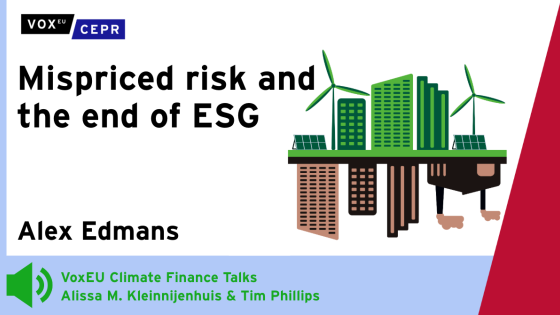Policymakers often claim that improving energy efficiency has large untapped potential to reduce carbon emissions and climate change while saving money for their constituents. One obvious target for increased energy efficiency is our homes. Features of residential buildings such as insulation, air duct sealing, and the thermal efficiency of heating and cooling systems play a major role in how much energy home occupants use – and ultimately in the size of their energy bills.
Historically, building codes have been the primary policy for residential energy efficiency. While these regulations have their merits, building codes are limited, affecting only new construction while leaving the energy efficiency of existing homes stuck in the past. In addition, it can be politically challenging for lawmakers to enact ‘strong regulation’ policies such as construction mandates.
In recent years, many jurisdictions have sought to overcome the limitations of building codes by using a ‘soft regulation’ policy, namely, home energy audits. This policy requires homeowners to conduct an energy audit before selling their homes and to disclose the energy efficiency characteristics to potential buyers. The policy does not require either the seller or buyer to make any changes to the energy efficiency of the home; it merely makes information available prior to the transaction. To date, dozens of municipalities, at least ten states in the US, and many European countries have implemented residential energy audit and disclosure requirements.
The logic underlying disclosure policies is compelling. An energy audit makes ‘invisible’ attributes of homes more salient to buyers. Because homebuyers can now more easily evaluate whether owning a home will entail low or high energy bills, they can negotiate the sale price accordingly. In turn, the knowledge that energy efficiency will be capitalised into sale prices should encourage homeowners to voluntarily make energy-saving improvements.
Critics of these programmes worry, however, that mandatory audits are “…another costly burden on harried homeowners” (e.g. Taylor 2017). If homebuyers value energy efficiency, shouldn’t sellers of efficient homes have a strong motivation to voluntarily disclose this information? By extension, buyers should perceive a lack of disclosure as a bad sign about a home’s energy efficiency. Grossman (1981) and Milgrom (1981) describe the theoretical foundation for this ‘unravelling’ argument: in equilibrium, nearly all sellers should voluntarily disclose their homes’ quality, making government mandates unnecessary.
This argument for near-complete voluntary disclosure is logically sound, but it relies on several critical assumptions that may not hold in practice. One assumption is that buyers pay attention to energy efficiency information when it is made available. Another assumption is that each home seller actually knows how the efficiency of their home compares to that of rival homes in the housing market.
In Myers et al. (2019), we examine these important assumptions using a natural experiment in the US city of Austin, Texas. Starting in June 2009, the Energy Conservation Audit and Disclosure (ECAD) ordinance requires sellers of homes that are ten years or older to obtain a certified energy audit and provide that information to potential buyers prior to any sale. An audit takes about an hour and costs the homeowner around $100–$300. The audit report describes the energy efficiency of various residential attributes, primarily for windows and shading, attic insulation, air filtration and duct sealing, and heating and cooling systems. The report also provides recommendations for how to reduce energy costs. Importantly, no action is required; the audit information is just that – information.
In our paper, we evaluate whether this audit and disclosure requirement affects investments in energy efficiency and the sale prices in housing transactions. To study these questions, we leverage variation in the ordinance’s coverage, which applies only to homes within Austin’s city limits. As shown in Figure 1, other homes adjacent to the city limits – listed in the same real estate market and served by the same electric utility – are not required to obtain audits. This disparate policy treatment allows us to compare sale prices and investments between homes sold at the same time that are and are not subject to the ECAD requirements. We also use variation from housing transactions that occurred before and after the policy came into effect, which enables us to control for any housing market trends that might differ across the greater Austin area.
Figure 1 Map of the Austin, Texas study area
Using tax appraisal and realtor data on all homes in the area, we first verify that the ordinance does not influence the propensity or timing of home sales, and that there is a fairly high degree of policy compliance. Additionally, we use data on residential characteristics and electricity-use to form a proxy that indexes all homes by their energy efficiency and has a high degree of correlation with audit measures among audited homes.
Having validated our strategy, we consider how ECAD affects homes’ sale prices. Figure 2 plots the correlation coefficients between sale prices and our energy efficiency proxy by year for homes both inside and outside of Austin (residual to property and jurisdiction-by-year control terms). The plotted values are relative to a baseline of 1997, and the vertical line denotes the start of ECAD in 2009. Importantly, the correlations exhibit a similar pattern for both areas before the programme, which indicates that homes outside Austin serve as a good comparison for homes inside Austin. Once the programme is in effect, however, the premium for energy efficiency becomes larger for homes in Austin.
Figure 2 Estimated energy efficiency price premiums by year and jurisdiction
This significant change in prices implies that: 1) the ECAD programme provides homebuyers with new information about homes and 2) homebuyers value this information, as they now pay relatively more when purchasing more energy efficient homes. Quantitatively, homebuyers are willing to spend an additional $2,000–$5,000 to obtain an expected savings of $153 in annual energy costs, a plausible shift in relative housing prices.
So, disclosing energy efficiency audit information affects sale prices. But does this in turn encourage investments? We find that it does. Using a similar approach, we demonstrate that the ECAD policy increases energy-saving home improvements made by both home sellers and home buyers. Specifically, the programme causes about a 31% increase in these investments by home sellers and about a 12% increase by home buyers. We find even larger effects for the types of investments that are specifically noted on the ECAD audit reports.
What does this mean for policy? Do audits need to be mandated or will private incentives to disclose be sufficient? To address this question, we explore why policies such as ECAD might yield these effects on home prices and on energy-saving upgrades. To do so, we evaluate patterns of policy compliance. Although the ECAD programme is officially mandatory, few resources are dedicated to enforcement, and about 60% of targeted homes comply. Figure 3 shows that, contrary to the intuition that the highest-efficiency sellers should be more likely to disclose, the audit propensity varies little across the energy efficiency distribution of post-2009 Austin home sales. That is, despite more efficient homes having significantly greater financial benefit from disclosure, sellers do not seem to respond to this incentive.
Figure 3 Audit disclosure propensity by energy efficiency decile
We consider several plausible explanations for the weak relationship between a home’s energy efficiency and the likelihood of disclosure. First, we rule out that the pattern is driven by seller ignorance about ECAD requirements, or by only some realtors choosing to comply with the mandate. We also show that compliance is not attributable to (only some) buyers asking for the audit information. Having ruled out these alternative channels, we examine two remaining possibilities for the weak relationship between homes’ efficiency and disclosure. On the one hand, the decision to audit might be driven primarily by differences in households’ compliance costs – including hassle costs and mental load costs in addition to any monetary costs – rather than by the expected financial benefits. On the other hand, it might be that a substantial share of sellers are uninformed about their homes’ relative energy efficiency.
Using a computational simulation, we evaluate the merit of these two candidate explanations. Across a wide range of plausible disclosure costs, we find that a large share of sellers would need to be uninformed about their homes’ comparative energy efficiency in order to rationalise the almost flat relationship we observe between energy efficiency and audit compliance.
In short, this implies that a significant share of sellers are unaware of the relative energy efficiency of their homes. Thus, programmes like ECAD address not only buyers’ ignorance about homes’ energy efficiency, but sellers’ ignorance as well. For this reason, a voluntary disclosure programme may not be effective: Sellers who are unaware of their own relative energy efficiency will not have adequate private incentive to disclose absent a government mandate.
Overall, our work suggests that mandatory energy audit and disclosure programmes have the potential to provide home buyers with new information that can affect housing prices and encourage investments in energy efficiency. Moreover, it appears that a major reason why sellers do not already provide this information in the absence of a mandate is that they are also ignorant about the relative efficiency of their homes.
References
Grossman, S J (1981), “The Informational Role of Warranties and Private Disclosure About Product Quality”, The Journal of Law and Economics 24(3): 461–483.
Milgrom, P R (1981), “Good News and Bad News: Representation Theorems and Applications”, The Bell Journal of Economics 12(2): 380–391.
Myers, E, S L Puller and J D West (2019), “Effects of Mandatory Energy Efficiency Disclosure in Housing Markets”, NBER Working Paper 26436.
Taylor, P S (2017), “Coming Soon, Another Costly Burden on Harried Homeowners—Mandatory Energy Audits”, Financial Post 29 August.










